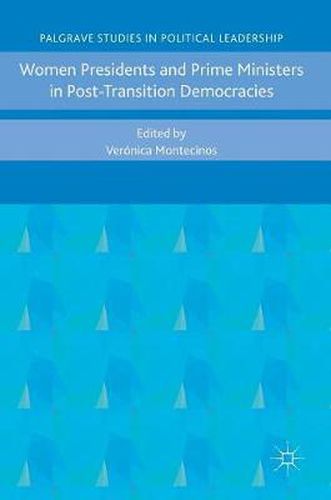Readings Newsletter
Become a Readings Member to make your shopping experience even easier.
Sign in or sign up for free!
You’re not far away from qualifying for FREE standard shipping within Australia
You’ve qualified for FREE standard shipping within Australia
The cart is loading…






This title is printed to order. This book may have been self-published. If so, we cannot guarantee the quality of the content. In the main most books will have gone through the editing process however some may not. We therefore suggest that you be aware of this before ordering this book. If in doubt check either the author or publisher’s details as we are unable to accept any returns unless they are faulty. Please contact us if you have any questions.
This book contributes to our understanding of the trajectories and prerogatives of female political leaders in the varying context of democratization, political institutions and cultural norms. No woman had been elected leader of a country before 1960, but with democratic transitions on the rise since the 1970s, the number of women in executive office gradually became a trend of global scope. In 2015, nineteen countries had an elected female Head of State and/or Government, a proportionally small number that is expected to climb as more women compete for high office, sometimes against other female candidates. This volume compares how women executives differ in promoting gender equality and advocating for women’s rights and interests, as well as in their ability to negotiate gender policy agendas. Comparative and theoretical chapters on post-transition women leaders are complemented by case studies in eight countries in Africa, Asia, Latin America and Eastern and Central Europe. This book will be of use to students and scholars interested in gender studies, comparative politics, and political leadership.
$9.00 standard shipping within Australia
FREE standard shipping within Australia for orders over $100.00
Express & International shipping calculated at checkout
This title is printed to order. This book may have been self-published. If so, we cannot guarantee the quality of the content. In the main most books will have gone through the editing process however some may not. We therefore suggest that you be aware of this before ordering this book. If in doubt check either the author or publisher’s details as we are unable to accept any returns unless they are faulty. Please contact us if you have any questions.
This book contributes to our understanding of the trajectories and prerogatives of female political leaders in the varying context of democratization, political institutions and cultural norms. No woman had been elected leader of a country before 1960, but with democratic transitions on the rise since the 1970s, the number of women in executive office gradually became a trend of global scope. In 2015, nineteen countries had an elected female Head of State and/or Government, a proportionally small number that is expected to climb as more women compete for high office, sometimes against other female candidates. This volume compares how women executives differ in promoting gender equality and advocating for women’s rights and interests, as well as in their ability to negotiate gender policy agendas. Comparative and theoretical chapters on post-transition women leaders are complemented by case studies in eight countries in Africa, Asia, Latin America and Eastern and Central Europe. This book will be of use to students and scholars interested in gender studies, comparative politics, and political leadership.